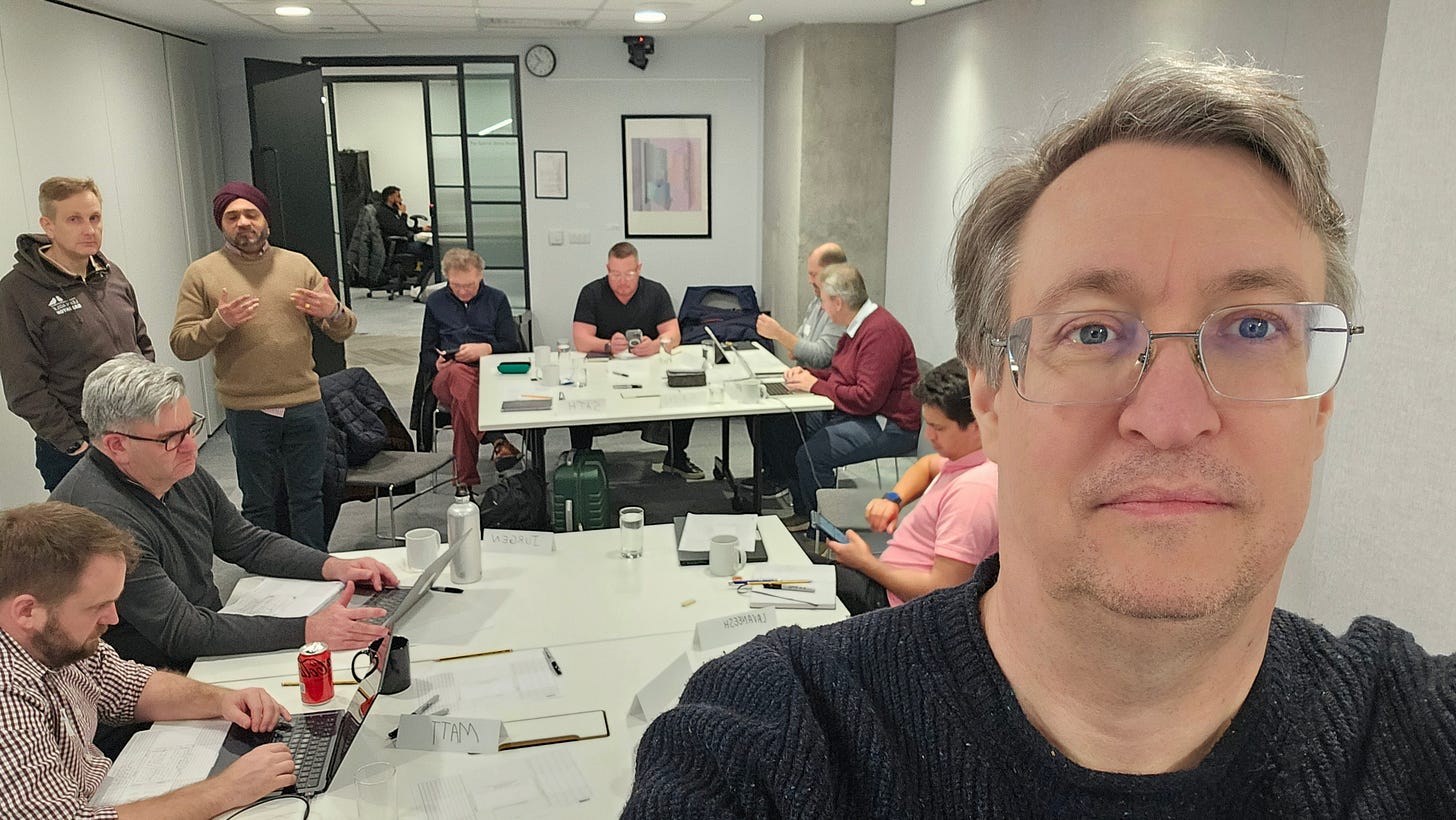Why We Can't See the Forest
What Keeps Us From True North
"What's a True North?"
Some thinking in advance of Karl’s and my True North Workshop.
We are geared to avoid action, and the most common action we avoid is thought.
When Karl Scotland and I have taught groups to make their strategy visual, True North always comes out on top as the one people provide the least thought to. Not because it is the easiest, but because it’s the hardest to envision and, therefore, the hardest for people to understand the value of.
When asked, teams, leaders, and organizations, almost give a scatter shot of overly vague or sickeningly specific attempts like: “We want to dominate the market.” “We want to be the world leader in plastic straws.” "We want to reduce cycle time by 30%." "We're implementing OKRs." "We want to be a great place to work."
These aren't True North statements—they're wishes or tactics masquerading as strategy. This happens so consistently that Karl Scotland’s version of the X-Matrix starts with True North to force you to confront it.
It helps to know where you’d like to go before you start the journey.
Our Prisons of the Tactical Mind
We live in a sea of action bias. We want to move, to be productive, to win….” Our brains are wired for the immediate, the concrete, the actionable. When faced with uncertainty or complexity, we default to what Karl calls "coherent actions," the things we can actually do. But True North isn't about doing; it's about being.
As Karl puts it, it should answer "who you want to be, not what you want to do." When we know that, we can build on that. Without that, we have no foundation.
The whole point of the X Matrix is to bring strategy and tactics together. If we act without strategy, we are just acting on whim. There are many cognitive biases that conspire to keep us trapped in tactical thinking, but let’s hit a few:
1. Availability Heuristic / Recency Bias: The Tyranny of the Immediate
We tend to give great weight to what we recently witness or what is bothering us right now—usually the problem right in front of us. The team is missing deadlines, so our "True North" becomes "better predictability." But that's just an anchor, a current fixation, and not a root cause or a True North. A real True North might be "immediate response to customer needs," which reframes predictability as just one potential path among many.
2. Confirmation Bias: Building Strategy Around Our Comfort Zone
We unconsciously craft visions that confirm what we already believe works. If you're good at process improvement, your True North will mysteriously align with process improvement. If you love metrics, you'll envision a data-driven future. But a compelling True North statement is more often challenging, pushing us toward uncomfortable territory we're not sure we can navigate.
3. Status Quo Bias: The Safety of the Known
When our true north is recognizable, it can be comfortable, even exciting…without being threatening. We say we want transformation, but we craft True Norths that are really just optimized versions of today. True North should be, as Karl says probably not achievable in the near term. That’s hard to get alignment around because there are infinite ways to fulfill that mandate. A team looking for alignment is highly likely to under-dream.
Humane Work Needs True North
We are all working together to create things. Products, services, ideas, art…we are all working together. We also naturally strive to do things…to engage our bias to action. This means that looking at a True North is both an imperative and very difficult. The full-on limitless options of the True North statement can quickly devolve into doubt and frustration.
But when teams or companies can't think at the “True North level,” they default to optimizing the tactics or unrelated wins over a coherent plan. This leads to incoherent work across the board. We take on projects with conflicting needs. We turn to frameworks instead of building trust. We measure productivity instead of creating psychological safety. We focus on executing quickly instead of first learning to build together.
The Visual Management Bridge
Karl's X-Matrix works because it makes the connection between True North and tactics visible. When we see how "immediate customer response" connects to "cycle time reduction" connects to "better retrospectives," the brain finally has a pathway between aspiration and action.
But most of us skip the first step. We jump straight to tactics because tactics feel safe, measurable, achievable. And indeed they are. The irony is that without True North, even perfect execution becomes meaningless optimization.
Karl’s Leading Question
Instead of asking "What do you want to do?" think more deeply and try Karl's trigger: "Who do you want to be?"
Not "We want better velocity" but "We want to be a team that responds immediately to customer needs"
Not "We need better metrics" but "We want to be an organization where people can see their impact"
Not "We should do more retrospectives" but "We want to be a workplace where learning is continuous and safe"
These feel harder because they are harder. They require us to work together and craft a future we're not sure we can create, with people we're not sure we can become. But … we want to.
But that's exactly why they work.
Karl and I have had hours of pub conversations about this. We’ve taught classes. Worked with clients. And worried over it. That’s why we are doing the True North Workshop in July.
We want to go deep and find out what people would change if they could decide “who” they wanted to be as they planned what they wanted to do.


